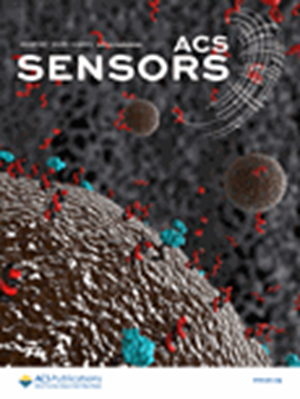调节局部氧配位,在锂离子电池的 O2 型层状阴极中实现高度可逆的阴离子氧化还原和可忽略的电压衰减
IF 8.2
1区 化学
Q1 CHEMISTRY, ANALYTICAL
引用次数: 0
摘要
O2- 型层状氧化物已成为高能锂离子电池的一种前景看好的正极材料,它提供了一种在循环过程中通过过渡金属 (TM) 在 TM 层和锂层之间的可逆迁移来减缓电压衰减的解决方案。然而,实现完全可逆的氧氧化还原仍然是一项重大挑战。本文通过在 Li0.85□0.15[Li0.08□0.04Ni0.22Mn0.66]O2(O2-LLNMO)的层状结构中引入 Li─O─Li 配置来解决这一问题,其中 □ 代表空位。这种调整改变了氧化还原活性氧环境,增加了 O 2p 非键带和 TM─O 反键带之间的能隙。因此,晶格氧对容量的贡献显著提高,改善了氧氧化还原过程的可逆性。O2-LLNMO 阴极的电压衰减极小(每循环 0.13 mV),循环稳定性极佳,100 个循环后仍能保持 95.8% 的容量。本文提出了一种设计具有稳定阴离子氧化还原活性的高性能层状氧化物的新策略,从而推动了下一代锂离子电池的开发。本文章由计算机程序翻译,如有差异,请以英文原文为准。

Modulating Local Oxygen Coordination to Achieve Highly Reversible Anionic Redox and Negligible Voltage Decay in O2‐Type Layered Cathodes for Li‐Ion Batteries
O2‐type layered oxides have emerged as promising cathode materials for high‐energy lithium‐ion batteries, offering a solution to mitigate voltage decay through reversible transition metal (TM) migration between TM and Li layers during cycling. However, achieving a fully reversible oxygen redox remains a significant challenge. Here, this is addressed by introducing Li─O─Li configurations in the layered structure of Li0.85□0.15 [Li0.08□0.04 Ni0.22 Mn0.66 ]O2 (O2‐LLNMO), where □ represents vacancies. This adjustment alters the redox‐active oxygen environment and increases the energy gap between the O 2p nonbonding and TM─O antibonding bands. As a result, the contribution of lattice oxygen to capacity is significantly enhanced, improving the reversibility of oxygen redox processes. The O2‐LLNMO cathode demonstrates minimal voltage decay (0.13 mV per cycle) and excellent cycling stability, retaining 95.8% of its capacity after 100 cycles. A novel strategy is presented to design high‐performance layered oxides with stable anionic redox activity, advancing the development of next‐generation lithium‐ion batteries.
求助全文
通过发布文献求助,成功后即可免费获取论文全文。
去求助
来源期刊

ACS Sensors
Chemical Engineering-Bioengineering
CiteScore
14.50
自引率
3.40%
发文量
372
期刊介绍:
ACS Sensors is a peer-reviewed research journal that focuses on the dissemination of new and original knowledge in the field of sensor science, particularly those that selectively sense chemical or biological species or processes. The journal covers a broad range of topics, including but not limited to biosensors, chemical sensors, gas sensors, intracellular sensors, single molecule sensors, cell chips, and microfluidic devices. It aims to publish articles that address conceptual advances in sensing technology applicable to various types of analytes or application papers that report on the use of existing sensing concepts in new ways or for new analytes.
 求助内容:
求助内容: 应助结果提醒方式:
应助结果提醒方式:


